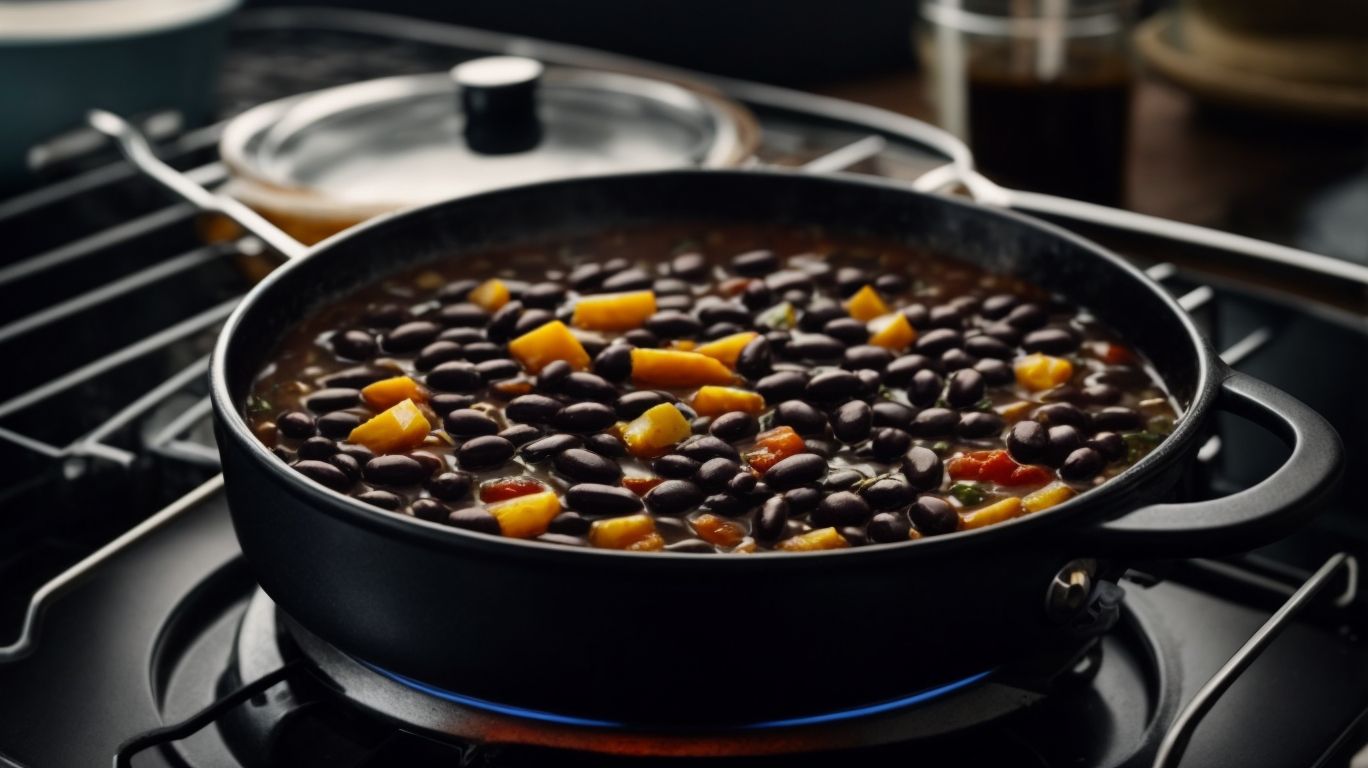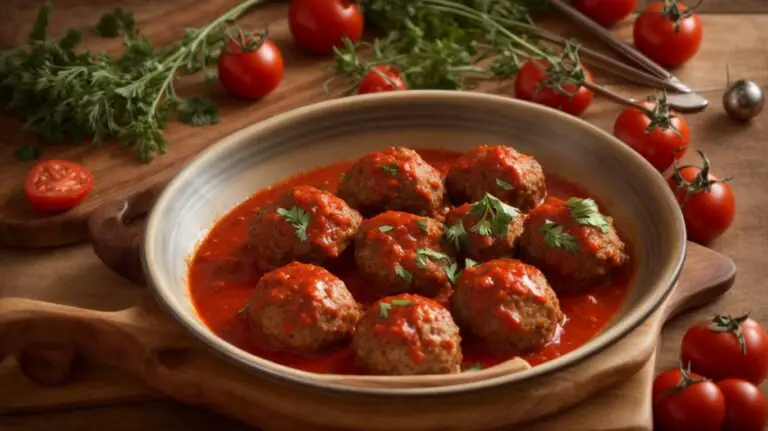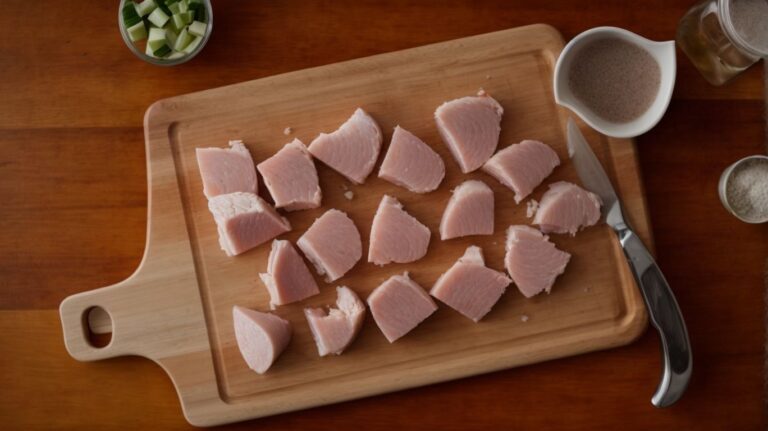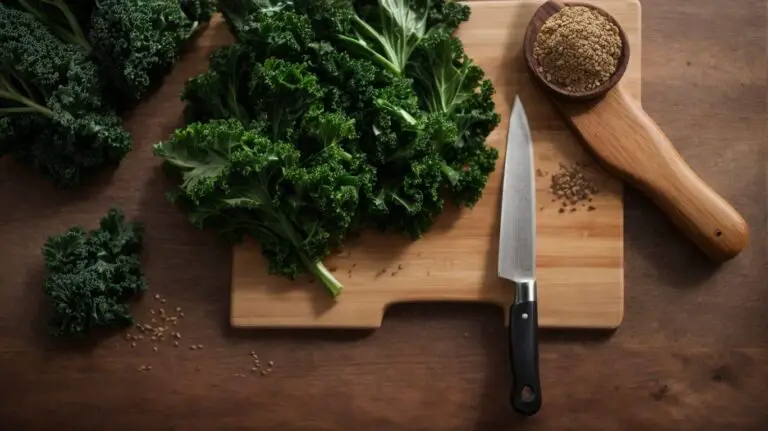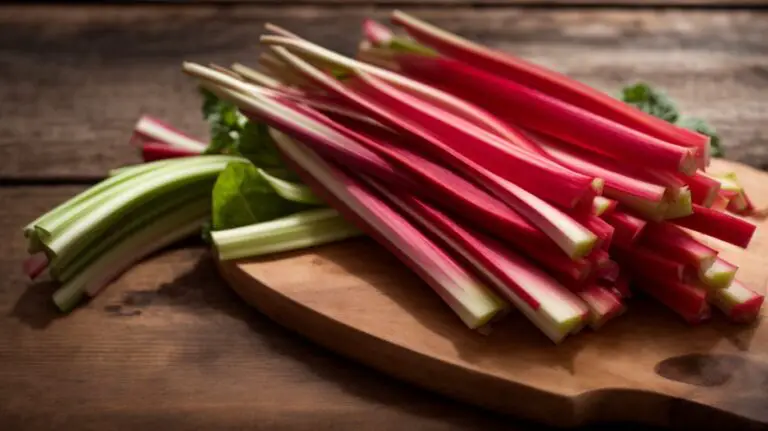How to Cook Black Beans?
Curious about black beans? Wondering about their nutritional value and how to cook them perfectly? Look no further!
In this article, we will explore the different types of black beans, methods for cooking them, and tips for serving and storing them. Whether you prefer dry or canned black beans, we’ve got you covered.
So, grab your apron and let’s get cooking with these versatile legumes!
Key Takeaways:
What Are Black Beans?
Black beans, also known as turtle beans, are a type of legume that belongs to the common bean family. These small, shiny beans are a staple in many cuisines worldwide, prized for their rich flavor and nutritional benefits.
Originating from Central and South America, black beans have been cultivated for centuries and played a crucial role in indigenous diets. Their dark, velvety skin encases a creamy white interior that offers a satisfying texture when cooked. High in protein, fiber, and antioxidants, black beans are a nutritious addition to any diet, aiding in digestion, weight management, and heart health.
Nutritional Value of Black Beans

Credits: Poormet.Com – Zachary Hernandez
Black beans are a nutritional powerhouse, packed with fiber, protein, and essential nutrients like folate, manganese, and magnesium.
Including black beans in your diet can help improve digestive health due to its high fiber content, which aids in promoting regular bowel movements and reducing the risk of constipation. The protein found in black beans is crucial for muscle repair and growth, making them an excellent vegetarian source of this essential macronutrient.
Types of Black Beans
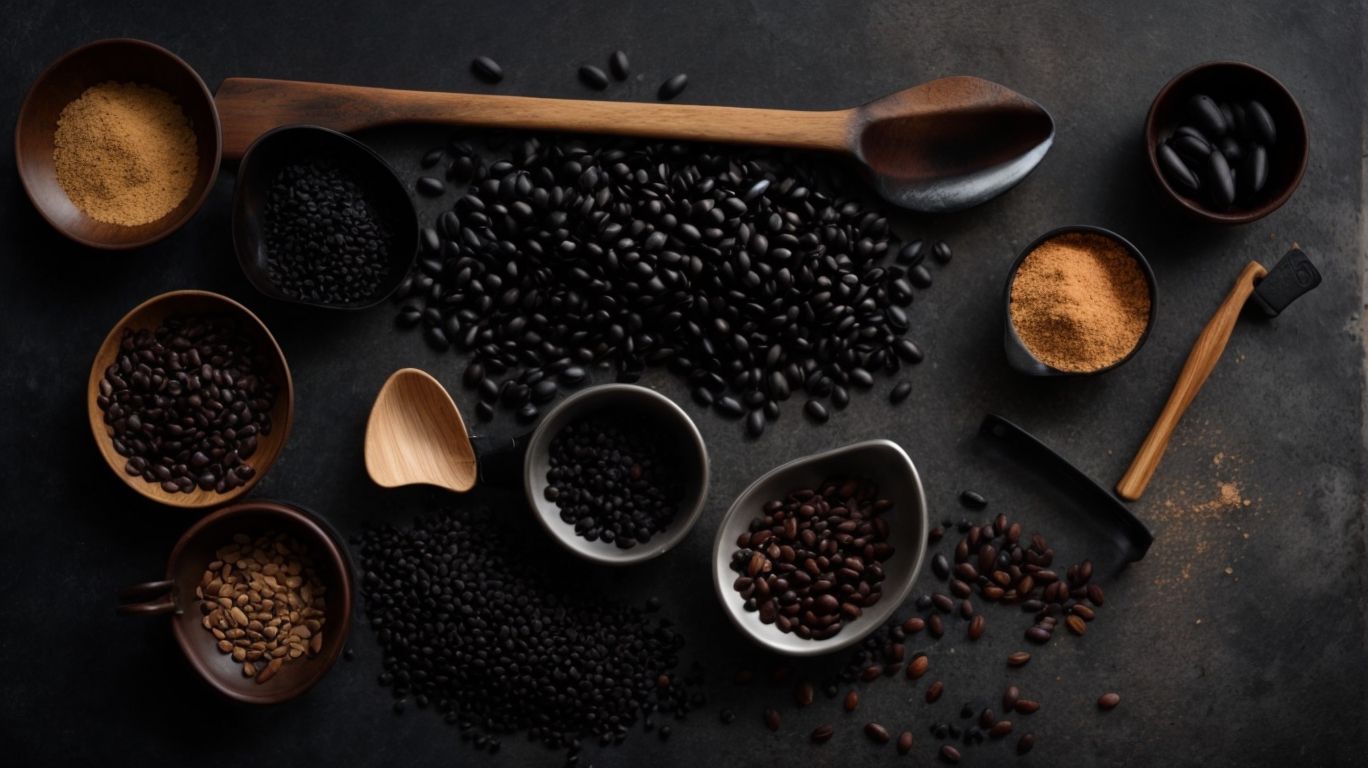
Credits: Poormet.Com – Zachary White
Black beans are available in two main forms: dried black beans and canned black beans, each offering distinct advantages and conveniences for different cooking needs.
Dried black beans are often preferred for their depth of flavor and texture as well as their ability to absorb seasonings well during cooking. They require soaking before cooking to rehydrate and soften, which can be done overnight or with a quick soak method.
On the other hand, canned black beans are convenient as they are pre-cooked and ready to use, making them a time-saving option for quick meals. While canned black beans may lack some of the depth of flavor compared to dried beans, they are still versatile and can be easily incorporated into various dishes such as salads, soups, stews, and dips.
Dry Black Beans
Dry black beans require soaking and simmering to achieve a tender, creamy texture that enhances their flavor profile and digestibility.
Soaking dry black beans before cooking is essential as it helps to rehydrate the beans, reducing the overall cooking time and enhancing their tenderness. By allowing the beans to soak for at least 8 hours or overnight, you can significantly improve their digestibility and decrease the phytic acid content, making the nutrients more accessible.
Simmering the soaked black beans is the next crucial step that further softens the beans and infuses them with flavors from the cooking liquid and seasonings. Slow, gentle simmering ensures that the beans cook evenly and absorb the delicious flavors, resulting in a rich and satisfying dish.
Canned Black Beans
Canned black beans offer a convenient alternative to dried beans, requiring simple draining and rinsing before use in various recipes, saving time and effort in the kitchen.
When using canned black beans, start by opening the can and pouring the beans into a colander. Rinse them thoroughly under cold running water to remove excess sodium and any starchy liquid. This process not only enhances the flavor but also reduces the overall sodium content.
Black beans can be easily added to salads, soups, burritos, or even mashed into veggie burgers for added protein and fiber. They are versatile and can be incorporated in both Mexican and non-Mexican dishes, adding a creamy texture and earthy flavor.
How to Prepare Black Beans for Cooking?
Preparing black beans for cooking involves specific steps like soaking dry beans or draining canned beans to ensure they are ready for the cooking process, enhancing their texture and flavor.
When working with dried black beans, the soaking process is crucial. Start by rinsing the beans in cold water to remove any dirt or debris. Then, place them in a large bowl and cover them with water, ensuring that the beans are fully submerged. Let them soak for at least 8 hours or overnight to rehydrate and soften.
For canned black beans, drain and rinse them under cold water to remove excess sodium and starch. This step not only improves the taste but also reduces the risk of digestive discomfort. Once drained, they are ready to be incorporated into your favorite recipes.
Soaking Dry Black Beans
Soaking dry black beans in ample cooking liquid helps to soften the beans, reduce cooking time, and enhance their digestibility by breaking down complex sugars responsible for gas production.
When you soak black beans, they absorb water, which leads to a plumper, creamier texture once cooked. The softened beans also cook more evenly and in a shorter time frame than unsoked ones. This method is particularly beneficial for individuals with sensitive digestive systems as it aids in reducing bloating and discomfort, making the beans easier to digest. It’s recommended to soak black beans overnight in water with a squeeze of lemon juice or a pinch of salt to further enhance their texture and flavor.
Draining and Rinsing Canned Black Beans
Draining and rinsing canned black beans is essential to remove excess sodium and starch, improving their flavor profile and making them more versatile for use in different recipes.
By draining and rinsing canned black beans, you can significantly reduce the sodium content, making them a healthier option. Rinsing the beans also helps get rid of the starchy residue from the canning liquid, resulting in a cleaner taste and better texture. This simple step is key to creating more vibrant and flavorful dishes that showcase the natural goodness of black beans.
Once the beans are rinsed, you can easily incorporate them into a variety of dishes. Add them to salads, soups, or chili for a boost of protein and fiber. Blend them into dips or spreads for a creamy texture and added nutrition. For a twist, try making black bean burgers or tacos, using the rinsed beans as a delicious and nutritious alternative to meat.
Methods of Cooking Black Beans
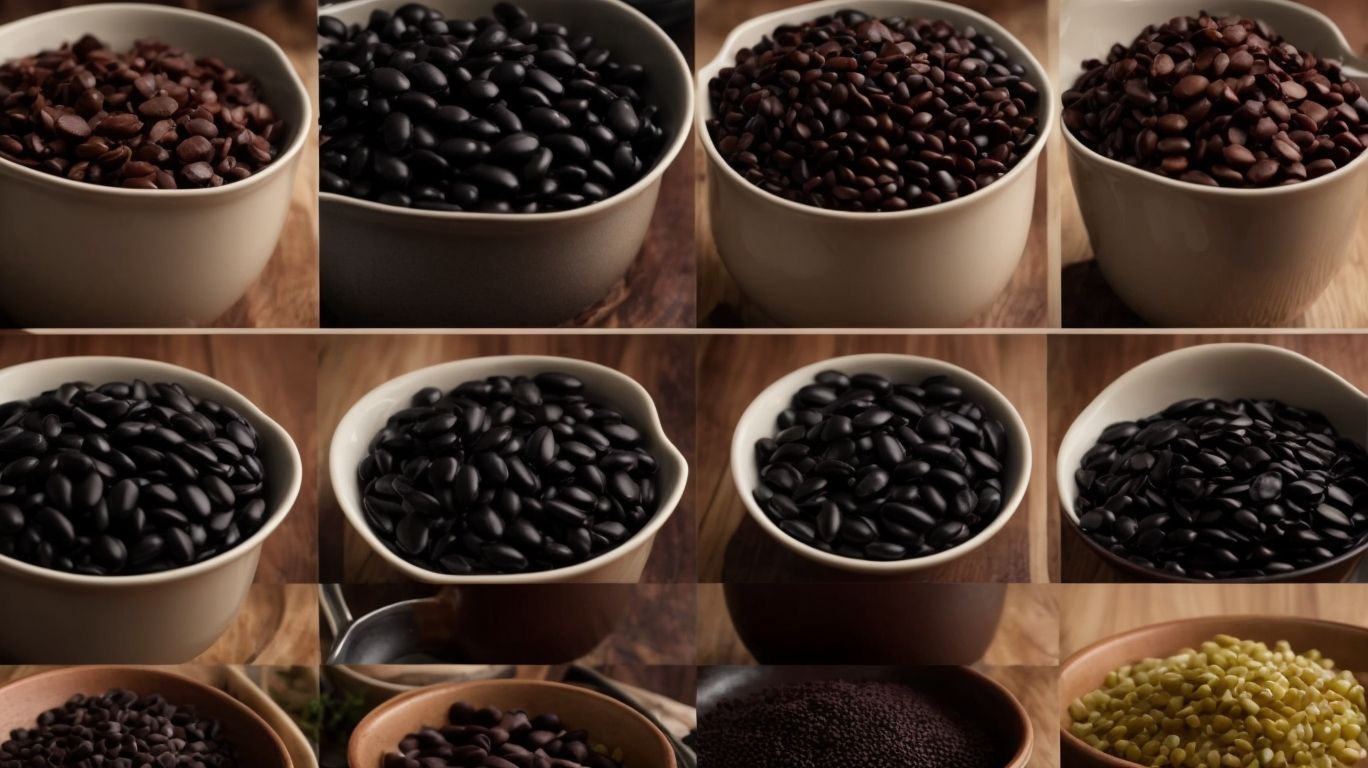
Credits: Poormet.Com – Scott Carter
Black beans can be cooked using various methods such as stovetop simmering, slow cooker preparation, and pressure cooker expedited cooking, each offering unique advantages in terms of time and flavor development.
Stovetop simmering allows for direct control over the cooking process, enabling you to adjust the heat levels to achieve your desired texture. This method is ideal for those looking to infuse additional flavors as the beans slowly break down, absorbing the seasonings.
On the other hand, slow cooker preparation offers convenience with minimal hands-on effort, perfect for busy individuals or those who prefer a set-it-and-forget-it approach. The slow, gentle cooking in a closed environment enhances the beans’ tenderness and results in a rich, melded taste.
Stovetop Method
Cooking black beans on the stovetop allows for gradual flavor infusion with aromatic seasonings like garlic, onion, and bay leaves, resulting in a rich, hearty dish that can be customized to personal preferences.
When preparing black beans this way, the first step is to rinse the beans thoroughly to remove any dirt or debris. Once cleaned, place the beans in a large pot filled with enough water to cover them completely. Add in a couple of cloves of minced garlic, a quartered onion, and a couple of bay leaves to start building those robust flavors.
Keep the heat on medium-low to simmer the beans gently. As they cook, *adjust the seasonings to your liking*, whether it’s adding more garlic for a stronger taste, increasing the onion for sweetness, or experimenting with herbs like thyme or cumin for extra depth.
Slow Cooker Method
Utilizing the slow cooker method for black beans results in a creamy, flavorful sauce that develops over hours of gentle simmering, ideal for creating versatile dishes like burritos, casseroles, or taco fillings.
Slow cooking black beans not only enhances their flavor but also allows for a hassle-free cooking experience. The slow cooker’s low and steady heat helps the beans soak up all the delicious seasonings, resulting in a rich and velvety texture.
One of the main benefits of using a slow cooker for black beans is the convenience it offers – you can simply set it and forget it. This hands-off approach ensures that the beans are cooked to perfection without any need for constant monitoring.
Regarding dishes where slow-cooked black beans shine, options are abundant. From hearty soups to flavorful salads, these tender beans add depth and richness to any recipe. Try incorporating them into chili recipes, grain bowls, or even as a topping for baked potatoes to elevate your dish.
Pressure Cooker Method
The pressure cooker method ensures that black beans cook quickly while retaining their tender texture, making it a convenient option for busy home cooks seeking a fast yet flavorful meal component.
Using a pressure cooker to prepare black beans also has additional benefits beyond just speed. Pressure cooking helps to preserve more nutrients compared to traditional cooking methods, ensuring that you get a healthier meal. The sealed environment of the pressure cooker locks in flavors and essential vitamins, creating a more intense taste profile in your dishes.
Once your black beans are perfectly cooked in the pressure cooker, you can easily incorporate them into a variety of recipes. From hearty stews and salads to flavorful dips and side dishes, pressure-cooked black beans are a versatile ingredient that adds protein and fiber to your meals.
Tips for Cooking Perfect Black Beans
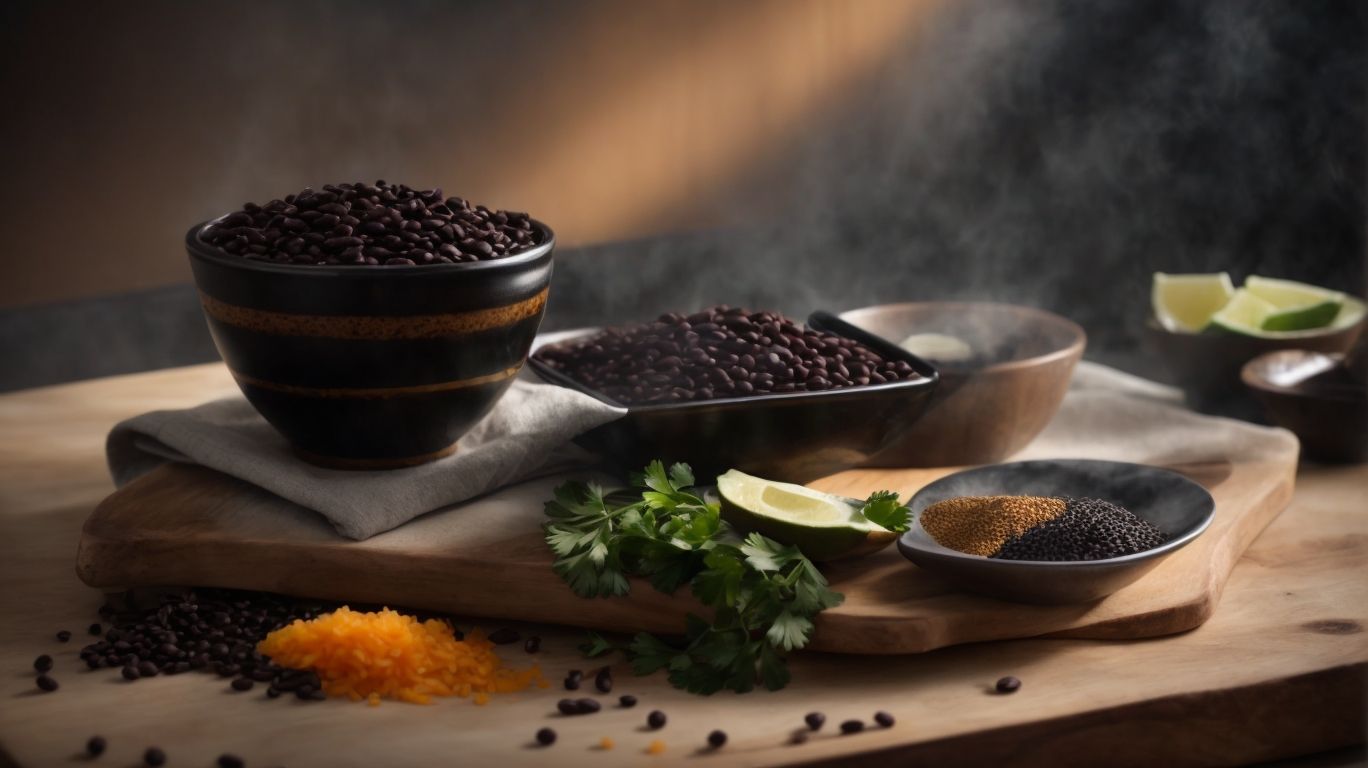
Credits: Poormet.Com – Alexander Lee
Enhance the flavor and texture of your black beans by experimenting with a variety of spices and seasonings, while also implementing techniques to prevent them from becoming mushy during the cooking process.
Regarding seasoning black beans, cumin, chili powder, garlic powder, and paprika can add a depth of flavor that complements their earthy taste. Consider using fresh cilantro, lime juice, and jalapeños for a zesty kick. Incorporating onions and bell peppers can enhance the overall taste profile.
To maintain the ideal texture of black beans, avoid overcooking by simmering them gently until they are tender but not falling apart. Adding salt only at the end of cooking helps prevent toughness. Rinse canned beans to remove excess salt and starch before using them in your recipes.
Adding Flavor to Black Beans
Elevate the flavor profile of black beans by incorporating a diverse range of seasonings and spices, such as lime juice, zest, and fresh cilantro, to create a vibrant and aromatic dish that complements various cuisines.
Adding a dash of lime juice to your black beans infuses a zesty and citrusy kick that brightens up the dish. For an extra burst of flavor, consider grating some lime zest over the beans just before serving to enhance the aroma and taste.
Fresh cilantro, with its herbaceous notes, not only adds a pop of color but also brings a refreshing element that pairs beautifully with the earthy flavors of black beans.
Mix chopped cilantro into your bean-based salads or soups to elevate their overall taste and appearance.
Preventing Black Beans from Getting Mushy
To prevent black beans from becoming mushy, ensure they are cooked at a gentle simmer rather than a vigorous boil, and consider adding grains like rice or quinoa to absorb excess moisture and maintain bean integrity.
Simmering the beans gently allows them to cook evenly and retain their shape and texture. It’s important to keep a close eye on the cooking process, making sure the beans are just gently bubbling. Incorporating grains such as rice or quinoa not only helps control the moisture levels but also adds a nice variety of textures to the dish. These grains act as a buffer, preventing the beans from getting overly soft.
How to Serve and Store Cooked Black Beans?
After cooking black beans to perfection, explore a variety of serving options ranging from standalone side dishes to key components in burritos, casseroles, tacos, salads, and more. Learn effective tips for storing leftover beans for future use.
Black beans are not just versatile in the ways they can be served but also in how they can be incorporated into numerous dishes to add depth and flavor. Whether mashed and seasoned as a topping for nachos or mixed into hearty stews, these beans provide a nutritious boost to any meal. For leftovers, ensure to store them properly in airtight containers in the fridge to maintain their taste and texture. They can last for up to four days when refrigerated, making them a convenient ingredient for quick and delicious meals.
Serving Suggestions
Incorporate cooked black beans into a myriad of dishes like burritos, casseroles, tacos, and salads to add depth, flavor, and plant-based protein, elevating the nutritional value and taste of your favorite recipes.
For a hearty and wholesome burrito, combine black beans with rice, cheese, and your choice of veggies for a fulfilling meal. Create a flavorful black bean casserole by layering beans with corn, peppers, and a dash of spices, topped with a crispy tortilla chip crust.
For a Mexican-inspired twist, stuff your tacos with seasoned black beans, fresh salsa, and creamy avocado. Add a protein boost to your salads by tossing in black beans with greens, tomatoes, and a zesty dressing.
Storage Tips
For optimal storage of cooked black beans, consider freezing portions in airtight containers for long-term use, or refrigerating leftovers for quick and convenient meal additions or recipe adaptations.
If you opt for freezing black beans, remember to cool them completely before transferring to containers to maintain their texture. Create portion sizes suitable for your needs to avoid wastage or the need to defrost more than necessary at a time. Label the containers with the date to keep track of freshness and usability.
For refrigeration, store the black beans in a sealed container or wrap them tightly to prevent them from drying out or absorbing odors from other foods. When repurposing leftover black beans, consider incorporating them into salads, soups, stews, or even as a filling for burritos or tacos.
Frequently Asked Questions
What are the health benefits of cooking black beans?
Black beans are a great source of protein, fiber, and essential nutrients such as iron, magnesium, and folate. They also have a low glycemic index, making them a good choice for those managing their blood sugar levels.
How do I properly store cooked black beans?
After cooking, let the black beans cool before storing them in an airtight container. They can be kept in the refrigerator for up to 5 days or in the freezer for up to 6 months.
What is the best way to cook black beans?
The most common method is to soak the beans overnight, then cook them on the stovetop for 1-2 hours. You can also use a pressure cooker or slow cooker for quicker cooking times.
Can I use canned black beans instead of cooking them from scratch?
Yes, canned black beans are a convenient option and can be used in salads, soups, and other dishes. Just be sure to rinse them thoroughly before using to remove excess sodium.
How can I add flavor to my cooked black beans?
You can add spices like cumin, paprika, or chili powder to your black beans while cooking for extra flavor. You can also add chopped onions, garlic, or peppers for a more savory dish.
Do I need to soak black beans before cooking them?
Soaking black beans can help reduce cooking time and make them easier to digest. However, it is not necessary if you are short on time. Just be sure to cook them thoroughly before consuming.

